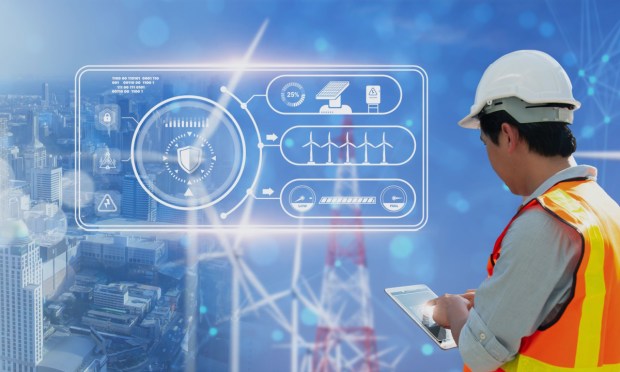Peeking Under the Hood of AI’s High-Octane Technical Needs

Artificial intelligence (AI) is on a rocket-ship growth trajectory.
And like most rocket ships, it is burning a lot of fuel along the way.
That’s because AI operations use more energy than traditional forms of computing, and training a single model often requires more electricity than over a hundred U.S. homes use over a single year.
Today’s revolutionary AI operations also increasingly require more and more data storage and memory capacity — a fact that is beginning the strain the physical realities of the silicon chips that house the bits of stored information, and the GPUs (graphics processing unit) used to train models on that information.
As reported by PYMNTS, a nascent silver bullet for meeting this growing demand for high-end computing capabilities might be leftover relics from the last innovation boom: the hardware used to build bitcoin mining rigs, which is equally useful for the elaborate calculations and computational workloads needed to train generative AI systems.
Bitcoin miners, many still stinging from the crypto market’s downswings, are realizing that they are sitting on a goldmine of high-end chips and GPUs — both of which are hot commodities in today’s newest shiny object economy, AI.
See also: How AI Regulation Could Shape Three Digital Empires
Some mining companies are reprogramming and repurposing their computing setups and either selling them outright or leasing capacity to AI startups, universities, and other organizations who aren’t able to gain — or afford — access to the AI computing capabilities of tech giants like Microsoft, Google and Amazon, who are less interested in smaller orders for their services.
But that only solves one of the industry’s emerging infrastructure issues. If the world continues to scale the amount of data it produces and consumers at a rate anywhere similar to today’s, data production will quickly outpace both the global amount of silicon produced and the capacity for that silicon to store it.
And it doesn’t change the fact that GPUs remain among the most power-hungry elements within a computing stack — whether they are being used for mining crypto, or training an AI.
The Nuts and Bolts of getting an AI Model Running
Large language models (LLMs) and other vast, data-driven AI operations frequently require tens of thousands of GPUs that are running complex and resource hungry processes 24/7 for weeks, or even months, in high-tech purpose-built data centers.
GPUs are especially well-suited to performing the sophisticated machinations, like multiplying large matrices and adding complex vectors, essential for the algorithms that power most AI models whether they are text-driven LLMs and NLP (natural language processing) solutions, or more image focused generative adversarial networks (GANs).
Every operation a computer performs represents a transaction between memory and processors, and each of those transactions corresponds to electrical signals that travel through hardware and burn a little bit of power along their way.
As these tasks, and the AI models they train and produce, become more data-intensive and elaborate, the need for GPUs and the need for the energy to run them both begin to scale exponentially.
Compounding the matter is that AI models must be retrained regularly in order to remain aware of current events — for example, any model trained on data up through January 2022 wouldn’t be aware of Russia’s February 2022 invasion of Ukraine; and a model trained today won’t know who the U.S. president will be in 2024.
Whereas in the past businesses may have chosen to build their own data centers to run bespoke operations, data centers run by cloud computing giants like Microsoft, Amazon, and Google offer attractive economies of scale for businesses who would rather not pay for their own construction, IT equipment, server room management and more. It is much easier to just rent space, after all.
A Significant Change Across the Landscape of Computer Architecture
There are three main pieces to computing for AI: data pre-processing, AI training, and the final piece — AI inference.
Data pre-processing requires labeling and cleaning the data meant to be used for training an AI, organizing and structuring the previously loosely gathered information.
Once the data has been effectively structured, it can then be used to train an AI model by teaching the algorithm how to interpret the data based on the parameters of is structure. What comes next is the “magic moment,” or the ability for AI inference which is when a fully trained AI model is ready to be let loose into the world and respond on its own to user queries and generate media rather than merely surface information.
AI’s ability to move beyond crunching numbers and reacting linearly to manually entered information is what sets it apart from traditional computing operations. AI’s greatest and most applicable innovation is its ability to use probabilistic models to weigh relevance to the task at hand, integrate that information, and then reply in turn in such a way that it resembles a dynamic dialogue rather than an A-to-B engagement.
This has led to the creation and commercialization of specific pieces of hardware tailored to a particular computing application, otherwise known as domain-specific accelerators.
Still, the fact remains that our ever-more connected, sophisticated, and smarter devices and computers are continually requiring a lot more electricity and producing a lot more carbon emissions.
AI is incredibly useful and will revolutionize the way enterprises operate. However, given the energy and environmental costs, companies must decide whether the juice is worth the squeeze, so to speak — and maybe a task like developing new drugs is worth it, while writing a script that finishes the end of a favorite canceled TV show is might not be.

